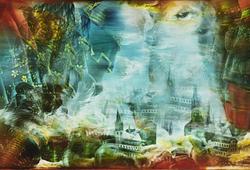Skål med lock, porslin. Qingdynastin, 1800-tal. Bencharong / benjarong.
Dekor i emaljfärgerna grönt, gult, blått mot en röd fond. Diameter 19 cm.
Brättesspricka vid locket. Små nagg.
Proveniens
From the Collection of a Swedish Connoisseur of Asian Works of Art. This is part of a collection, a collection that was assembled not only with great care, but also with a deep curiosity and passion for learning - a true academic collection. The collector has been actively buying and studying Chinese porcelain since the early 1970’s.
Utställningar
To see other lots sold from this collection, see Bukowskis auction 649. Lot no 951-967. Also Bukowskis Sale 657, lot no 1145-1164.
Övrig information
Benjarong (Thai เบญจรงค์) porcelain ware is a kind of painted Thai ceramics. While the name literally means "five colours," it is a figurative description and actual decoration can have anywhere between three and eight colours. For the decoration, repetitive forms, usually geometric or flower-based, are used.
The earliest trace of Benjarong ever recorded is back to the Ming dynasty in China (1368–1644 A.D.). In the reign of Xuande Emperor (1425-1435 A.D.) Benjarong was invented at Zhejiang province but it only gained popularity during the reign of Chenghua Emperor (1464-1487 A.D.). In China, Benjarong will have three or more colors but in Thailand, Benjarong usually has five or more colors.
About 600 years ago, a princess from China was married into the Siam dynasty (now Thailand) and she brought Benjarong with her.
Benjarong was then supplied from China to the king of Siam for several generations










































